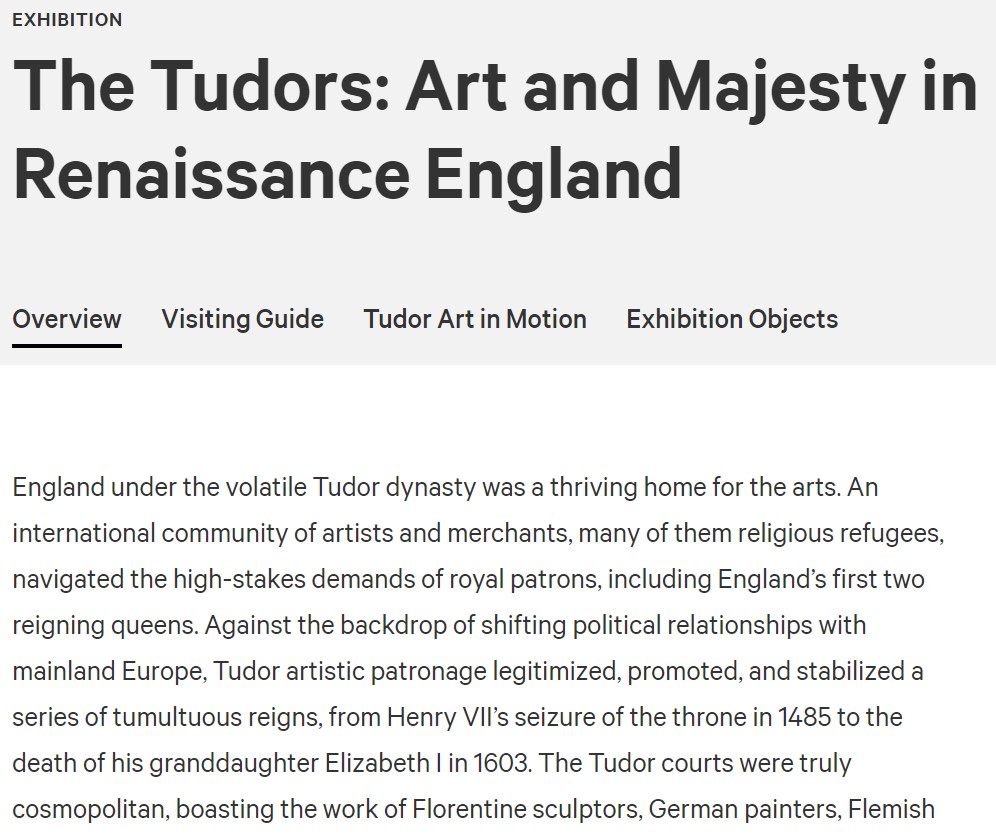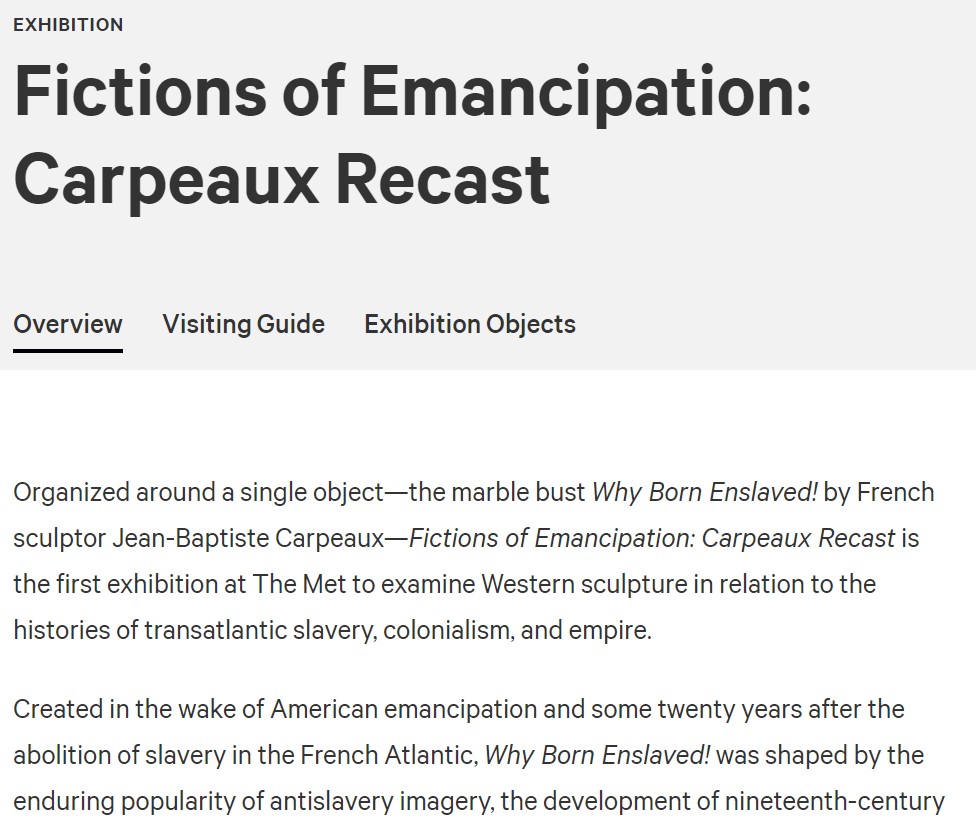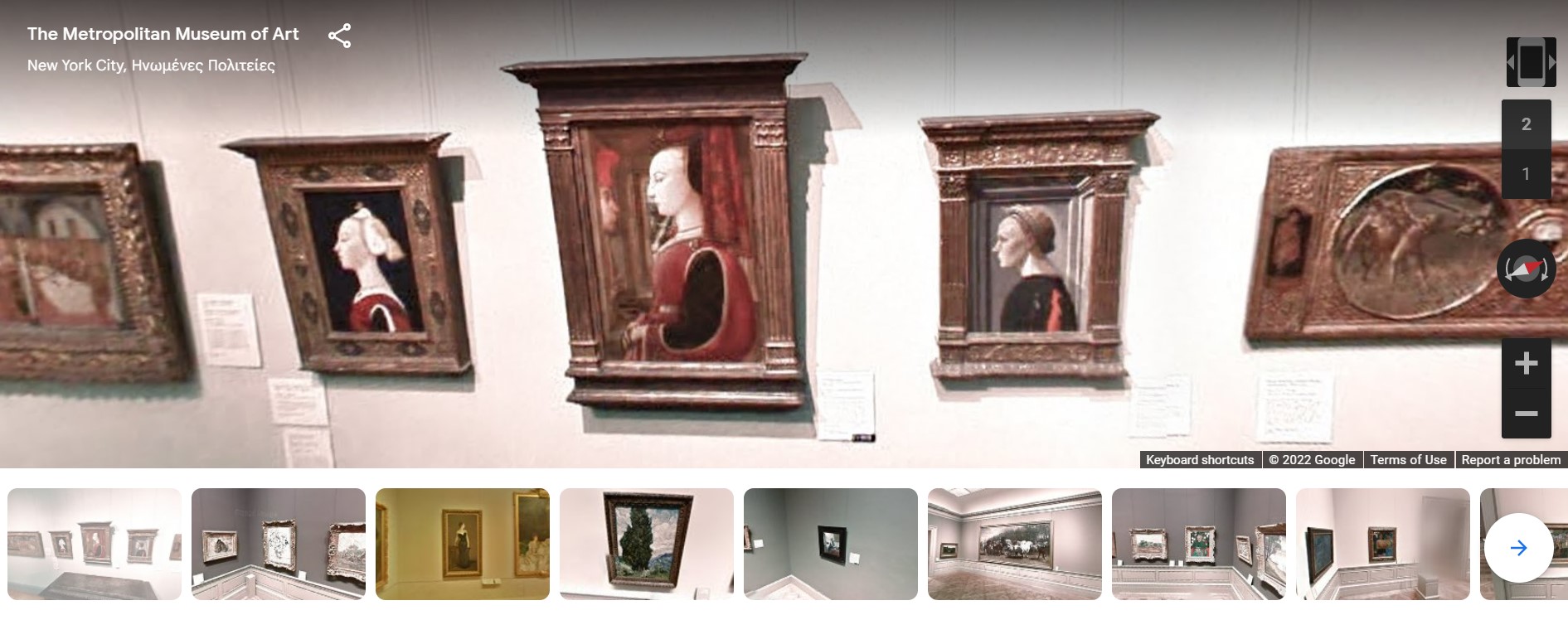Beyond the Museum
Description
by Tereza Chanaki, December 2022
Both the Met’s website and its Google Arts and Culture page are filled with valuable digital content that is waiting for art and culture lovers to find it. This page will outline these two digital resources that the Metropolitan Museum provides to its visitors and the content they are made up of, through the two main frameworks outlined in the introduction: additional exhibition content and learning.
To begin with, the Met’s website is understandably dense with information that covers its approx. 500,000 items. To access additional exhibition content from home, the simple “exhibitions and events” button is intuitively offered on the home page. In exploring temporary exhibitions, it is obvious that every exhibition has a different mix of digital content. In the case of the current Tudor Exhibitionone can find a quick overview of the exhibition, and notably a linked pdf that provides access to all in-gallery labels. There is also a playlist with the full audio guide and transcripts, as well as a full list and images of the artifacts found in the exhibition. Interestingly, at the very bottom of the page, one can find “featured media”, which includes two long-form video lectures and essays. At the same time, the “Visiting Guide” tab, offers a deep analysis of the exhibition and an overview of objects worth highlighting.
Most significantly though, some exhibition pages include different additional tabs. For instance, within the Tudor exhibition, you can access the “Tudor Art in Motion” tab which includes behind-the-scenes content from the staging of the exhibition. Similarly in the “Hear Me Now: The Black Potters of Old Edgefield, South Carolina” temporary exhibition, the “Audio Guide Contributors” tab provides bios of those who made the exhibition possible, and in the “Lives of the Gods: Divinity in Maya Art” page all information is also offered in Spanish. These additional tabs serve an audience that has created the time, within their home and through their personal device, to research and learns more about ongoing or past temporary exhibitions.


Comparatively though, the digital content available for the permanent collection and exhibitions is significantly larger and more diverse than that for the temporary exhibitions. Under the “Art” button on the home page, one can explore the “The Met Collection” as well as a “Read, Watch, Listen” page. “The Met Collection” page opens up a research page that allows you to explore the Met’s half a million artifacts, as well as multiple different resources with extra content. Some highlights include behind-the-scenes videos, “articles, podcasts and videos”, “see our research” and “public domain images”. Within the “Read, Watch, Listen” page, one can explore based on topic, special articles, video interviews, and most importantly very close-up and high-quality examinations of items, where the user can zoom and interact with the item.
Finally, the Met is a very rich resource that unfortunately is not advertised or easy to find through the Met’s official website. One can only find information about the Google Arts and Culture project by searching within the Met’s article and press archive, where a handful of articles can be found. However, the reality of the project is much more interesting, with a variety of experiences offered through the webpage. These include high-quality interactive scans of artwork and 38 online exhibitions which use a variety of multi-media components such as video and audio. Moreover, there are two “museum views” that use 3D technology to allow individuals to explore the Met’s building and galleries through a digital walk-through.


Overall, both the website and the Google Arts and Culture page are well-thought-out and resourceful websites. They include information about exhibitions and the collection that cannot be found within the physical gallery and thus extend the Met experience beyond the walls of the museum.